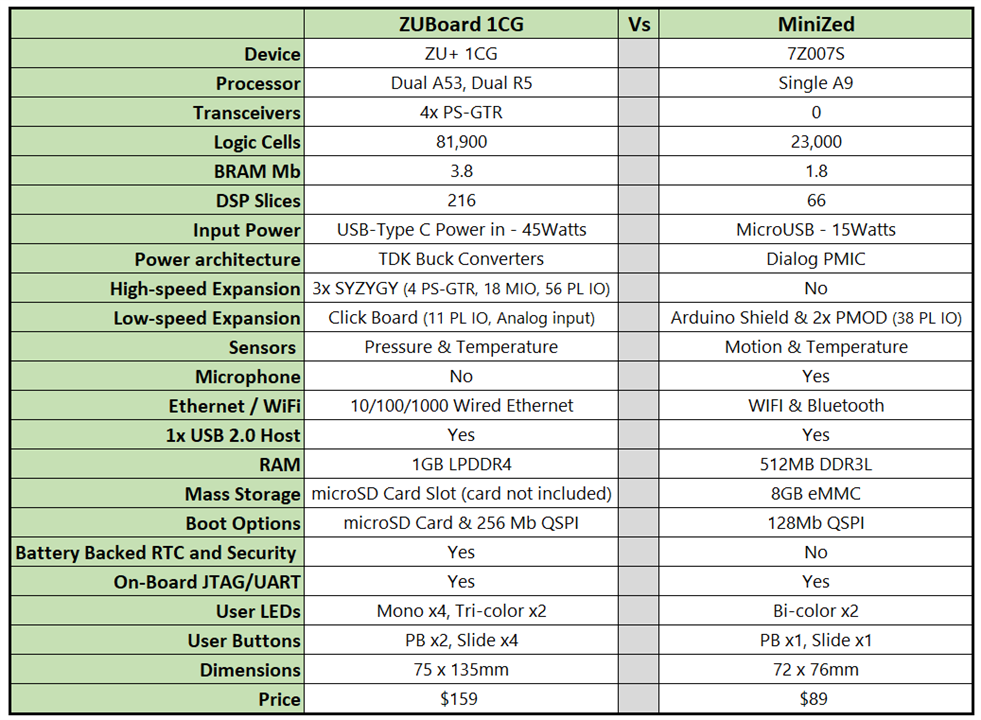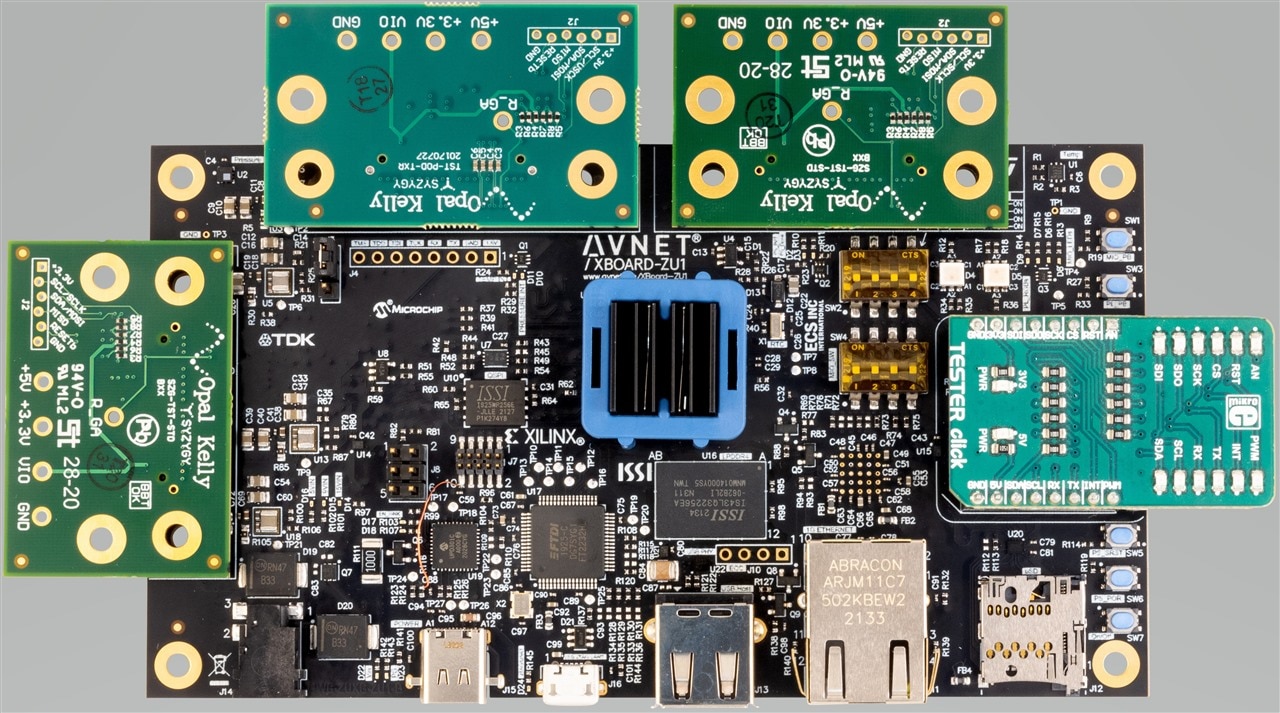ZUBoard 1CG Announced
Avnet announced the ZUBoard 1CG in May and went on to show the prototypes at the Embedded Vision Summit. The prototypes will be demonstrated at Embedded World in Germany next week as well and Sensors Converge later this month.
You can see more information here on Element14 here:
/products/devtools/avnetboardscommunity/w/boards/27643/zuboard-1cg
As suggested by jafoste4 in his blog, one of the purposes for developing ZUBoard 1CG is to be a low-cost entry point for Zynq UltraScale+ MPSoC learning, exploration, and development.
Up until recently, one of the least expensive AMD-Xilinx SoC boards was the Zynq-7000 based MiniZed. At $89, this was an excellent value to explore the Zynq-7000 architecture, including the Arm A9 processor. MiniZed is now End-of-Life, and ZUBoard 1CG will be the recommended starting point for entry-level AMD-Xilinx SoC exploration. ZUBoard 1CG is more expensive at $159, but there is tremendous value in the new architecture. With that in mind, I thought it would be helpful to compare MiniZed and ZUBoard 1CG to show some of the differences and what you'll be getting for the extra $70.

ZU+ 1CG Device
Several major differences stem from the main AMD-Xilinx component. The ZUBoard 1CG has the XCZU1CG-1SBVA484E device, which has dual Arm A53 and dual Arm R5 processing cores, as compared to the single Arm A9 on the MiniZed's XC7Z007. The XCZU1CG has >3.5x the logic cells, >2x the BRAM, and >3x the DSP slices. Additionally, the XCZU1CG has four PS-GTR transceivers exposed on the SYZYGY expansion, which will make future expansion with things like DisplayPort, NVMe, or PCIe possible.
Memory
The ZUBoard 1CG has twice as much RAM with 1GB of LPDDR4. The QSPI is 2x that on the MiniZed. ZUBoard also has an on-board microSD card slot for convenience. The MiniZed eMMC is a an excellent choice for long-term deployment, but more difficult for prototyping. We plan to make a bootable eMMC expansion module available in the future.
Communications
Both boards expose USB 2.0 Host. ZUBoard has more default input power, so a USB device can be powered without a secondary power connection as was required on MiniZed. ZUBoard will offer wired 10/100/1000 Ethernet, as compared to Wi-Fi/Bluetooth on MiniZed.
Expansion
The expansion options on ZUBoard 1CG are a significant improvement over MiniZed -- both in terms of speed as well as quantity of I/O. The MiniZed had lower speed options in an Arduino Shield and Pmod. ZUBoard offers three high-speed SYZYGY expansion ports along with a single mikroBUS Click site. In total, ZUBoard exposes more than double the I/O that the MiniZed offered. The photo below shows a ZUBoard with example SYZYGY pods and Click Board plugged in (SYZYGY and Click available separately).

Power
While the ZU+ device does not take significantly more power than the Zynq-7000, we upgraded the input power from 15W to 45W to be able to handle the extra expansion slots and USB device without requiring supplemental power. The input power is supplied using a USB-C cable with on-board controller, which we think will be very interesting for developers looking to add a ubiquitous input supply to their new projects.
Battery Backup
The ZU+ has built-in real-time clock as well as bitstream security. To keep time on the RTC (which is critical for many Operating Systems) as well as maintain the battery-backed security RAM, a battery is required when power is off. The ZUBoard ships with a small clock-style CR2032 battery to allow engineers to fully develop with the RTC and BBRAM.
User Interface
The ZUBoard has 2-3x the number of user LEDs and button/switch inputs. ZUBoard has both mono and tri-color LEDs to experiment with.
Pre-order
The ZUBoard is available for pre-order now, with shipments planned for Q4 2022. We are excited to release more information about this board over the summer as we finalize the validation and release example designs!
ZUBoard 1CG at Newark/Farnell -- COMING SOON!
ZUBoard 1CG at Avnet -- http://avnet.me/zuboard-1cg-pdp
